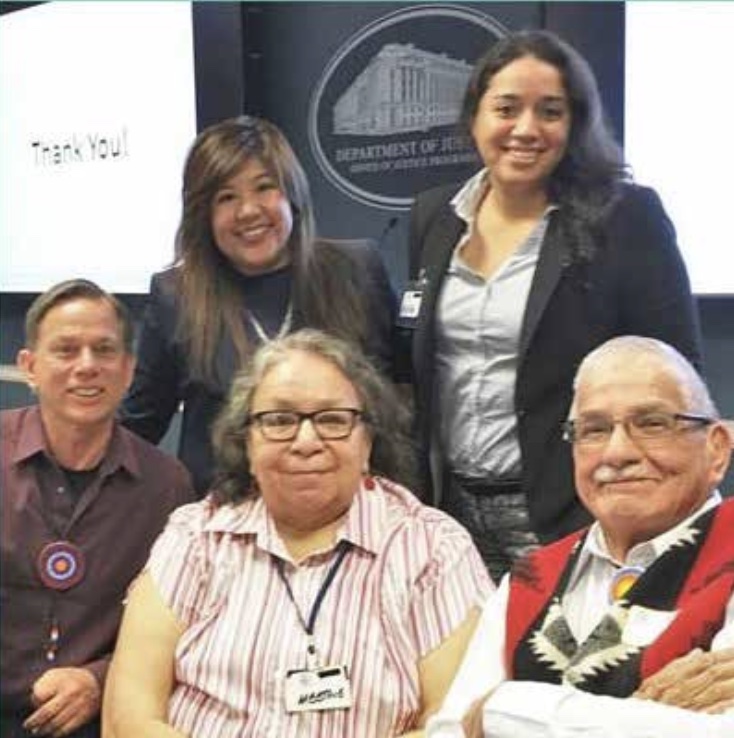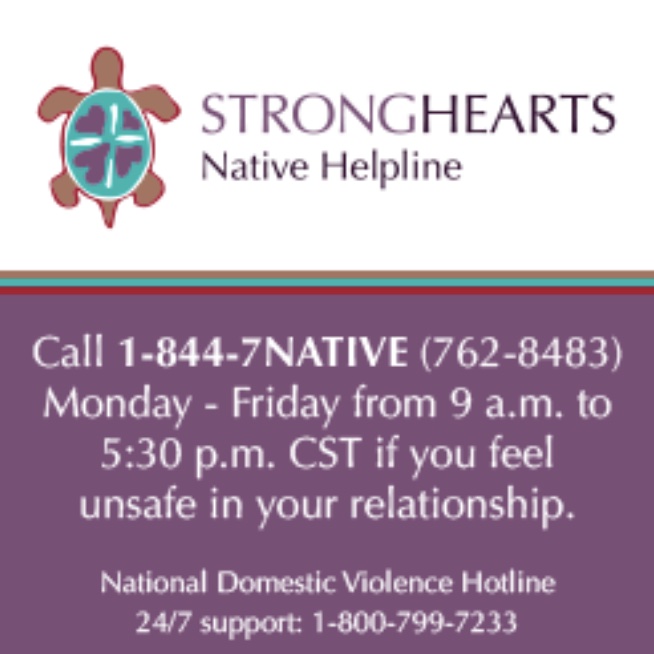Tribal Victim Services Mapping Tool Moves Ahead!

American Indians and Alaska Natives (AI/AN) have the highest crime victimization rates in the nation and often have difficulty
connecting with victim services. AI/ AN victims of crime face additional challenges such as navigating complex jurisdiction barriers and a dearth of culturally appropriate services, both on and off tribal lands.
On January 1, 2016, the Office for Victims of Crime of the U.S. Department of Justice funded the National Center for Victims of Crime (NCVC), National Congress of American Indians (NCAI), and the Tribal Law and Policy Institute (TLPI) to work together and create a web-based tribal resource mapping tool that would link AI/AN victim/survivors of crime to tribal victim services anywhere in the country. The project was designed to also help identify gaps in the network of existing services. To achieve these goals, the project partners have convened several events in order to seek input from primary stakeholders from tribal communities.
"The tribal resource mapping tool will be an invaluable resource for service providers and American Indian and Alaska Native victims of crime who are in need of accessing critical resources in a timely and efficient manner," said Bonnie Clairmont, Victim Advocacy Specialist, TLPI.
Tribal Meetings Across the United States
A key stakeholder meeting was held June 14, 2016, at Gila River Indian Community and the Wild Horse Pass Hotel & Casino. Key stakeholders attending included but not limited to tribal judges, lawyers, advocates, a child advocacy center director, and a representative from an existing national hotline service. This stakeholder meeting identified several themes, including an awareness that AI/AN survivors need access to services throughout their life course; that the tool should include long-term services, or recurring service needs, as well as immediate service needs of victims to include restorative justice programs, human services, and trauma-related services that are not specifically “victim” services; and lastly, that the tool be properly and frequently maintained.
In addition, five focus groups were held across the country, gathering community input on the mapping tool, including the perspectives of urban Indians and Alaska Natives. Each focus group yielded unique regional concerns, such as accessibility issues in Alaska; inclusion of smaller departments within non- Native services in California; Two Spirit and spiritual services in Minnesota; emphasis on the need for male-specific inclusive services in Arizona; and safety concerns related to public access to service information in Oklahoma. The project team, key stakeholders, and focus group participants helped address these concerns in order to ensure the tribal resource mapping tool will be effective.
The project partners convened a tribal stakeholder meeting during the 15th National Indian Nations Conference, with 43 participants in attendance. This meeting included an overview of the project, and important updates from the first year; attendees rotated to six stations during the meeting, where they spent time offering input on the mapping tool. Each station was designed to address remaining issues and concerns from the outreach phase, focus groups, and stakeholder meetings.
On June 27, 2016, the project team was able to gather input on the mapping tool from 45 participants attending the mid-year meeting of the NCAI Task Force on Violence Against Women representing many of the most active tribal victim organizations. The Violence Against Women Task Force serves as a unified tribal voice opposed to violent crimes perpetrated against Native women.
The project partners worked to develop Data Collection Fields and Inclusion Criteria that fit closely with input received from key stakeholders and information yielded from focus groups. The Provider Survey Questions and Data Collection Fields document was developed to collect program information from each organization/ agency that will be listed in the tool. Additionally, the project team created Inclusion Criteria and Guidelines to guarantee that the tool captures the full scope of existing services and becomes a reliable resource for victims. Both products were created in consultation with the Office for Victims of Crime and more than 100 tribal stakeholders that work with AI/AN survivors of crime and abuse.
Next Steps
 The official project name was change to the Tribal Resource Mapping: Resources for Survivors of Crime and Abuse. The Native organization Advancing Communities (www.advancingcommunities.org) has been selected as the mapping tool tech developer and Ramon Swaim (Yaqui) is the project’s graphic designer. The project’s next steps include: populating the online tool with AI/AN resources, piloting the tool through community engagement to ensure usability, and promoting the tool so that the AI/AN community has knowledge of the tool and can successfully access and use it.
The official project name was change to the Tribal Resource Mapping: Resources for Survivors of Crime and Abuse. The Native organization Advancing Communities (www.advancingcommunities.org) has been selected as the mapping tool tech developer and Ramon Swaim (Yaqui) is the project’s graphic designer. The project’s next steps include: populating the online tool with AI/AN resources, piloting the tool through community engagement to ensure usability, and promoting the tool so that the AI/AN community has knowledge of the tool and can successfully access and use it.
“The project partners along with the Office for Victims of Crime have worked long and hard to ensure tribal communities and key stakeholders have had opportunity for input. Project partners continue to be open to receiving additional input into ensuring this tool meets the needs of crime victims and appropriate service providers who are in need of accessing critical services and accurate information in a timely fashion,” said Jerry Gardner, Executive Director, TLPI.
If you have resources in your community that you would like to be included in the Tribal Resource Mapping: Resources for Survivors of Crime and Abuse, or if you have any questions, please email project partners at tribalresourcemapping@ncvc.org.





